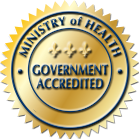Sobriety.ca Foundation is a riverside treatment facility found in beautiful rural Canada. Here, individuals struggling with addiction have access to multiple evidence-based treatment options. Our facility provides a comprehensive rehabilitation treatment plan catered towards everyone’s needs and desires. We offer the following treatment services:
- Treatment for psilocybin-dependence in residential settings
- Interventions for psilocybin use
- Rehabilitation from psilocybin
- SMART Recovery
What is Psilocybin?
Like LSD, magic mushrooms are hallucinogens. There are a variety of species of magic mushrooms that grow throughout the world- all containing psilocybin- the active ingredient responsible for the hallucinogenic effects of the drug. Mushrooms have been used since the ancient times in Indigenous ceremonies for spiritual purposes. However, they gained a more recreational status outside of religious or spiritual practices in the early sixties. As it happens, this closely coincided with the hippie movement.
Today, psilocybin-containing mushrooms grow on every inhabited continent of the world. In fact, there are over one-hundred known species of this mushroom where North America is home to the largest diversity of them. They can be identified by their long, thin stems and triangular-like caps; however, many other mushrooms closely resemble them in the wild. Therefore, making it difficult to distinguish between a mushroom containing psilocybin and a poisonous mushroom.
The strength of each mushroom can vary between each species and further between each individual mushroom. Typically, they are sold as whole, dehydrated mushrooms but can often be purchased as a blended powder. Most often, individuals ingest the mushrooms raw or cooked, mixed with common foods, or they steep them into a tea. In powder-form, they can be snorted. Finally, psilocybin can be synthesized in illegal laboratories and sold as a white powder or in tablet or capsule form.
What is Psilocybin Addiction?
The best evidence today suggests that individuals cannot become physically dependent on magic mushrooms. However, there is little evidence to suggest that individuals may become psychologically dependent on the drug. As it happens, it is possible to develop a tolerance towards psilocybin which consequently leads to continued and increased use.
Short-Term Effects and Risks
- Nausea
- Vomiting
- Dry mouth
- Loss of urinary control
- Changes in mood
- Weakness of muscles
- Drowsiness
- Impaired coordination
- Heightened auditory, visual, and tactile sensory experience
- Enhanced or altered perception of reality (e.g., colours more salient, objects begin to warp)
- Increased visual acuity
- Possible synesthesia
- Increased anxiety
- Panic attack
- Euphoria
Long-Term Effects and Overdose
- Hallucinations
- Changes in mood
- Delusions
- Disconnected thoughts
- Risk of serious health effects when consumed with other drugs or alcohol
Pharmacology – How does it work?
Typically, the drug begins to produce effects 10 – 40 minutes after ingestion which can last between 2 – 6 hours, depending on the potency of the drug and the individual’s tolerance. Consequently, a typical dose of mushrooms ranges between 10 – 50 mg of fresh mushrooms. In dry form, this is roughly 1 – 5 grams. As it happens, everyone fluctuates in sensitivity to the drug. Therefore, some individuals experience the effects following a small dose whereas others require significantly more.
Like other hallucinogens, psilocybin interacts with serotonin receptors throughout the brain (e.g., 5-HT1A/D, 5-HT2A/C). Specifically, it has a high affinity for the 5-HT2A receptor. Psilocin, another active ingredient in magic mushrooms, has a high affinity for the 5-HT2B and 5-HT2C receptors. These receptors are located throughout the brain, in areas including the cerebral cortex. As it happens, when psilocybin binds to 5-HT in the cortex, this interaction produces fluctuations in mood and motivation, as well as possible psychotic effects.
There is ample evidence to suggest that psilocybin interacts with non-serotonergic receptors. In fact, it has been shown that it increases the concentration of dopamine in the basal ganglia of the brain. In turn, this plays a role in the hallucinogenic effects of psilocybin. These effects are believed to be secondary to the serotonergic effects of the drug as neither psilocybin nor psilocin have an affinity for dopamine receptors.


